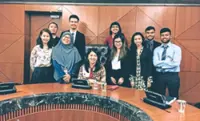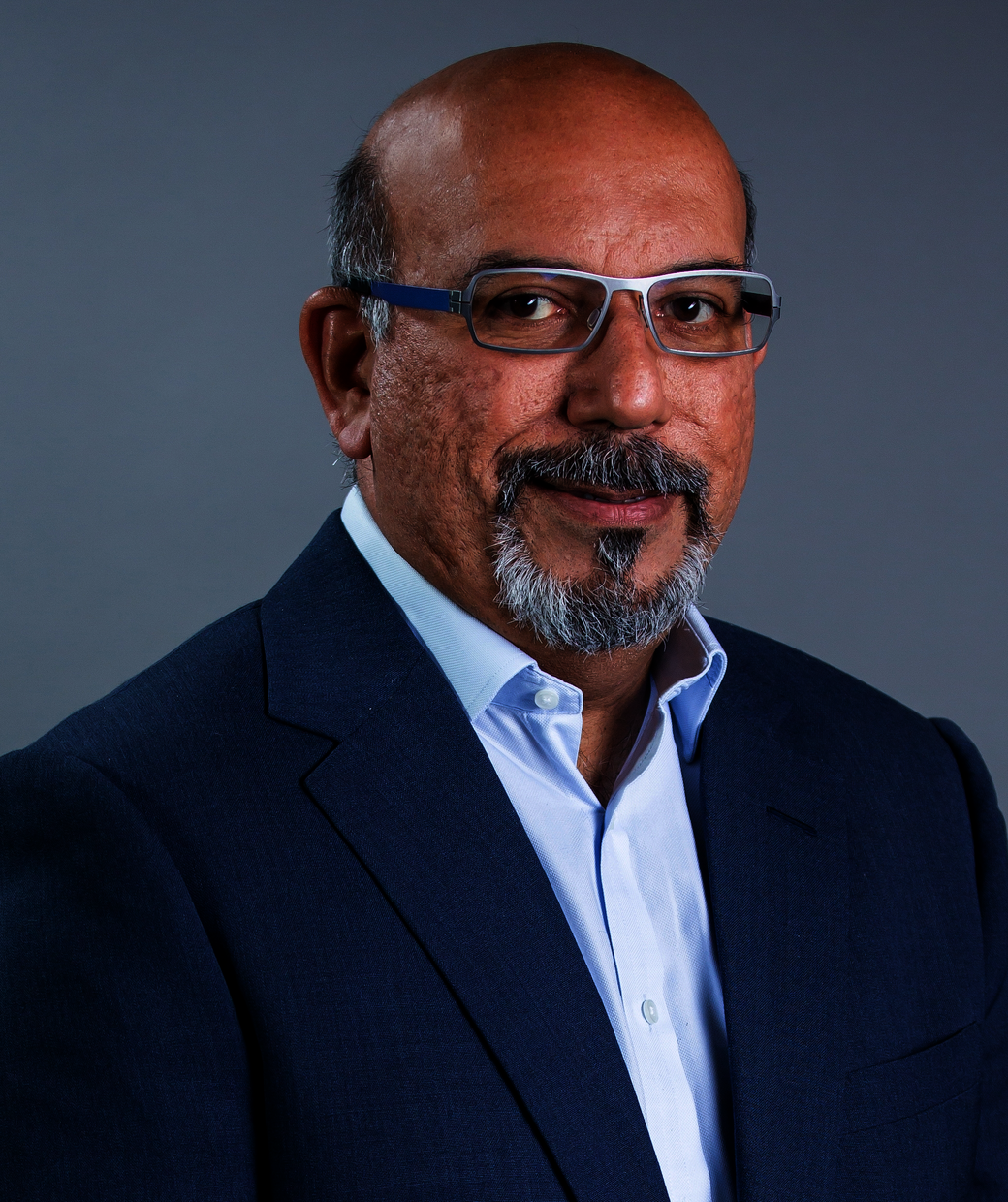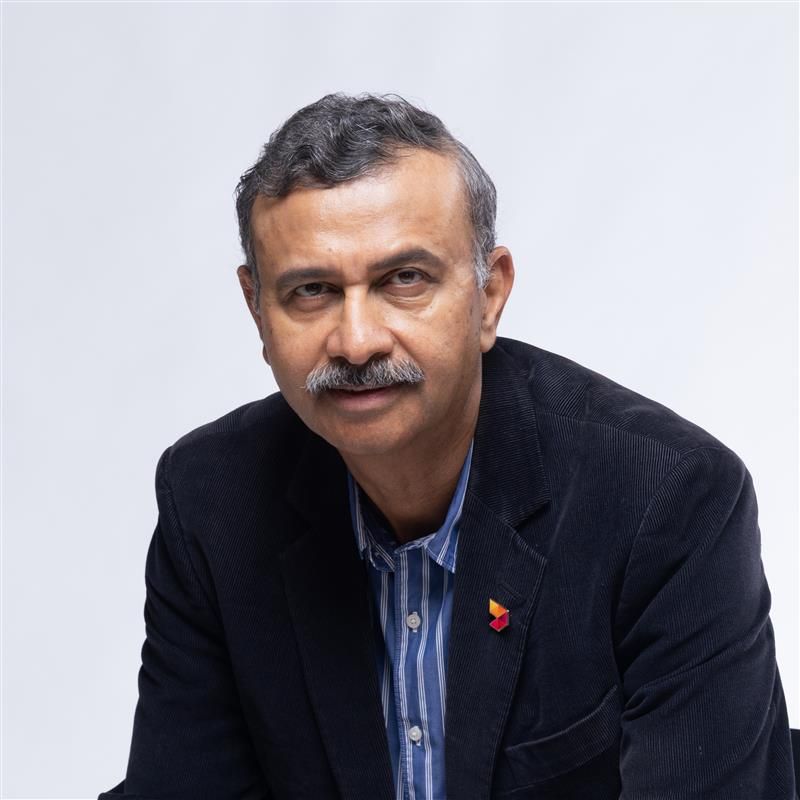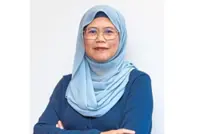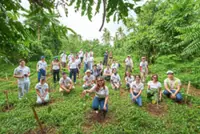HOME to about 700 million people, Asean is one of the most vibrant and diverse economic blocs in the world.
At one end of the spectrum are countries like Singapore and Malaysia, where Internet penetration is close to 100%, while the other are nations such as Myanmar and Laos, where less than 70% population is online – reflecting a stark digital divide across the region.
As Asean pushes for deeper digital integration and economic growth, it faces a dual challenge – expanding connectivity while ensuring environmental and social sustainability.
From rural broadband networks to the race toward net-zero emissions, Asean’s digital future is being built with both ambition and responsibility.
At the heart of these advancements are the region’s connectivity enablers – telecom operators and digital infrastructure providers that are expanding access while embedding sustainability into their operations.
Axiata Group
Axiata Group Bhd, a digital telco operator, infrastructure provider and digital services company, is committed to bridging the digital divide with environmental responsibility in mind.
Serving over 175 million subscribers across not just Asean but Asia, Axiata focuses on expanding broadband access to underserved and rural communities, enabling connectivity for schools, healthcare providers and remote populations.
All of these efforts are driven by a strong commitment to environmental, social and governance (ESG) principles, according to its group chief executive officer Vivek Sood.
“We are committed to achieving net-zero emissions by 2050, with approved near-term and long-term targets from the science based targets initiative. Our decarbonisation efforts focus on reducing Scope 1 and Scope 2 emissions,” says Vivek.
In 2024 alone, Vivek says Axiata recorded a 7% reduction in Scope 1 and Scope 2 emissions intensity compared to the previous year.
“Our efforts include deploying solar power at base stations, replacing generators with lithium batteries, and implementing hybrid charging systems for remote base transceiver stations. Additionally, we power telco towers with solar and hybrid renewable solutions,” he notes.
As of 2024, Axiata established over 7,178 solar-powered sites, an increase of over 150 sites from 2023.
Still, energy efficiency remains a key priority for Axiata, Vivek says.
He highlights that the group continuously upgrades power systems, transitions legacy indoor sites to outdoor ones to reduce cooling needs, and deploys solar panels to support hybrid power supply across thousands of its sites.
“In 2024, we achieved approximately an 11% reduction in network fuel energy consumption and a 29% year-on-year reduction in facility electricity consumption through continued optimisation efforts,” he says.
Looking ahead, Vivek says the group is addressing supply chain decarbonisation by identifying emission sources and establishing a Scope 3 baseline.
“Using a globally recognised methodology, we enhance supplier engagement to improve climate management and reduce emissions across our value chain,” he says.
Beyond environmental goals, Vivek says Axiata is committed to creating meaningful social impact.
“We harness the power of technology to create meaningful social impact – expanding access to connectivity, education, healthcare and digital services.
“By bridging the digital divide, we empower individuals and communities to participate fully in the digital economy and improve their quality of life.”
As of the end of 2024, Vivek says the group’s social initiatives had made a tangible impact, reaching nearly 26.8 million people.
Of these, 6.7 million benefitted from education initiatives, 19.2 million from healthcare and 880,000 from financial services.
Building on the commitment to social inclusion, Vivek says Axiata also addresses affordability and accessibility through Boost, its regional financial technology (fintech) arm and digital bank.
“Efforts are focused on practical and accessible fintech and digital banking solutions that empower consumers and small businesses, and partner with local retailers to bring digital services closer to rural communities, lowering barriers to financial participation,” he says.
To date, Vivek says Boost has disbursed over RM5bil in financing to MSMEs across Malaysia and Indonesia, directly enabling these businesses to digitise, scale and thrive.
As digital inclusion grows, so too does the need for robust cybersecurity.
“Protecting our users and maintaining their trust is critical as digital adoption accelerates,” Vivek says.
He cites a range of emerging threats, including risks from 5G expansion, data breaches, ransomware and malware attacks, phishing scams targeting users and employees, distributed denial-of-service attempts, and vulnerabilities introduced through third-party partners.
To address these risks, Vivek says Axiata invests “heavily” in cybersecurity infrastructure such as the Axiata Cyber Fusion Centre (ACFC), which plays a central role in safeguarding users and building trust in the region’s growing digital economy.
The ACFC in Malaysia serves as a central hub for proactive threat detection and analysis across the group, supported by advanced technologies and cybersecurity experts.
“We continuously evaluate the maturity and risk landscape of cybersecurity and data privacy, aligning with our Enterprise Risk Management Framework and industry best practices to ensure optimal protection and compliance,” he notes.
On governance, Vivek outlines the group’s comprehensive approach to anti-bribery and anti-corruption.
“To mitigate bribery and corruption risks, the Anti-Bribery and Anti-Corruption (ABAC) Plan 2024-2026 incorporates integrity surveys, effectiveness testing, and compliance maturity reviews. Annual key objectives are set based on the ABAC Plan, legal requirements and regulatory expectations, reinforcing Axiata’s zero-tolerance for bribery and corruption.
“Compliance, ethics and integrity are governed through a three lines of defence model, overseen by the risk and compliance management committee, with quarterly updates to the board risk and compliance committee, and board of directors.
“In addition, the Axiata Board Investment Committee oversees all investment decisions, focusing on cash generation, return on investment and value creation.”
Ultimately, Vivek says, Axiata’s vision extends beyond infrastructure and access.
“Axiata aims to be more than just a connectivity provider.
“Our role is to drive comprehensive digital inclusion by expanding reliable network access, especially in rural areas, while simultaneously ensuring a safe online environment for everyone.”
EdgePoint Infrastructure
EdgePoint Infrastructure, an independent telecommunications infrastructure company in South-East Asia, is advancing its ESG agenda across four key pillars –environment, operational compliance, people and community, and governance.
Its chief executive officer and founder Suresh Sidhu says the group is committed to embedding ESG principles across its operations and investments, guided by a robust internal framework that prioritises safety, inclusion, innovation and ethical practices.
“At our core, we are an inherently sustainable business. We focus on efficient site design, use of environmentally conscious materials, and the deployment of renewable energy to reduce environmental impact and build operational resilience,” he says.
Suresh says EdgePoint’s net-zero roadmap targets a reduction in Scope 1 emissions, primarily through initiatives such as solar-powered towers, hybrid gensets, and methanol fuel cells in Malaysia, Indonesia and the Philippines.
“To date, EdgePoint has deployed over 20 solar-powered sites, several solar hybrid gensets and methanol fuel cells,” he says.
Suresh says the newest solar hybrid site in Malaysia, located along a major Klang Valley transport corridor, provides up to 100% of the energy required to operate the telecommunications equipment.
“With a 5.9- kilowatt peak (kWp) capacity, the site operates autonomously using photovoltaic (solar) energy, complemented by battery storage,” he says.
“This deployment is expected to reduce the site’s annual carbon emissions by approximately 78%, while also ensuring seamless connectivity for travellers along the highway.”
Beyond environmental initiatives, Sidhu said EdgePoint is also focused on uplifting communities through improved digital connectivity and inclusive infrastructure development.
“Our company’s approach focuses on addressing a range of community needs from connectivity, infrastructure enhancement and economic opportunities, thereby improving the quality of life in the areas,” Sidhu said.
He pointed to EdgePoint’s Connectivity For Communities (CFC) programme – an initiative aimed to bridge the digital divide in underserved areas by delivering reliable Internet access and promoting digital inclusion – as a key example of this commitment.
“EdgePoint’s local community development programmes collaborates with local authorities and communities to bring connectivity and build or improve road access in remote areas, or difficult to build sites, along with other forms of infrastructure upgrades to enhance the local populations’ quality of life, support economic activity and facilitate social mobility,” he said.
Sidhu said, in Malaysia, Indonesia and the Philippines, the CFC programme has established 12 digital classrooms in partnership with local organisations, impacting over 6,500 students.
“These efforts aim to empower students in underserved and rural areas, as well as their surrounding communities by facilitating access to online education, healthcare, banking, government services and future employment opportunities,” he said.
Looking ahead, Sidhu said the company aims to continue supporting the region’s 5G rollout by leveraging its infrastructure portfolio, increasing co-locations and expanding shared infrastructure to enable faster network expansion while reducing environmental impact.
“We will also continue integrating energy-efficient technologies and sustainable power solutions across our sites, towards building a more connected Asean in a responsible and resource-conscious way,” he said.
He noted that solar hybrid solutions are a growing focus area for EdgePoint, particularly in light of the region’s equatorial climate and high levels of solar insolation.
Ultimately, Sidhu said EdgePoint sees itself as more than a tower company - it aims to be a catalyst for digital inclusion and sustainable progress across Asean.
“We believe that connectivity should be a universal right, accessible to everyone regardless of location, background, or circumstance, and that that connectivity should be a catalyst for broader community development,” he said.
“Beyond simply sustainably constructing towers, we believe that connectivity is key for fostering sustainable growth and creating a positive impact on the local communities in which we operate.”


